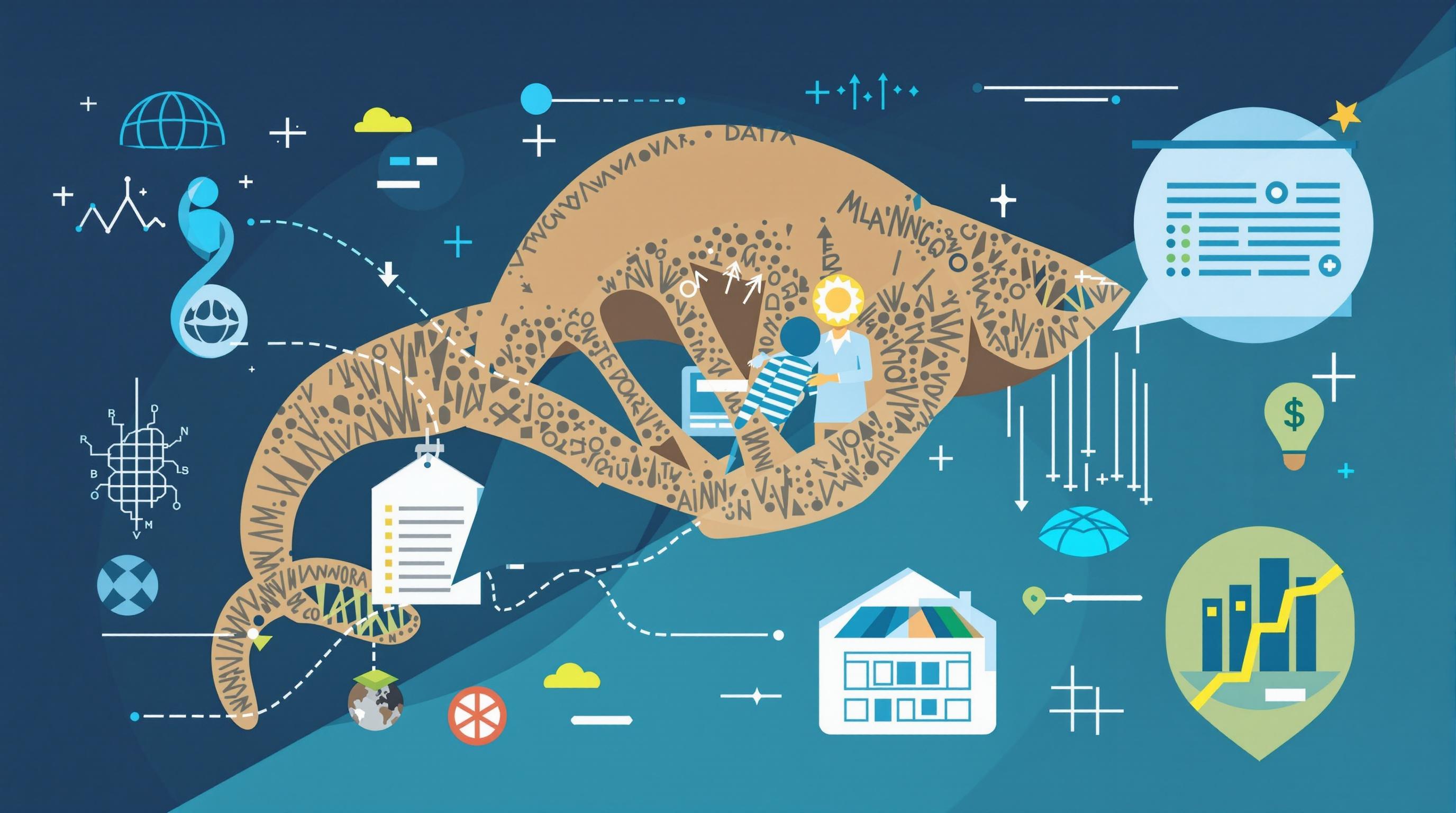Featured Articles
- "Conversational AI: The New Frontier in Workplace Culture or Just Another Buzzword?"
- Exploring Bioinformatics in Corporate Strategy: The Hidden Link Between Genetic Data and Market Innovation
- Navigating the Shadows: The Rise of Dark Patterns in Business Technology and User Experience
- The Quirky Rise of 'Techno-Optimism': How Businesses Embrace AI Dystopia for Profit
- The Untapped Potential of Mythical Creatures in Business Tech: Surreal Strategies for Modern Enterprises
"Unlocking the Future: How Business Technology is Shaping the Psyche of the Remote Workforce"
"Unlocking the Future: How Business Technology is Shaping the Psyche of the Remote Workforce"
In today's rapidly changing work environment, business technology plays a crucial role in shaping the mindsets and behaviors of the remote workforce. This article explores how innovative tools and technologies are transforming remote work dynamics, impacting productivity, mental well-being, and connectivity among employees.
The Rise of Remote Work
It’s hard to remember a time when the phrase "remote work" was foreign to our ears. A study by Upwork predicts that by 2028, 73% of all teams will have remote workers (Upwork, 2020). Thanks to advancements in business technology, the shift from traditional office spaces to virtual work environments is more feasible than ever.
Digital Tools Redefining Work Habits
Let’s face it: trying to coordinate a project with a team scattered across the globe without the right tools is like herding cats. No one could ever find their way back to the discussion platform, right? Enter project management software like Asana and Trello. These tools are game-changers, allowing teams to collaborate seamlessly, track progress, and communicate in real-time.
Engagement Tools to Boost Morale
As remote friendships flourish over group chats, the sense of belonging often takes a sleigh ride to the North Pole. It’s a tough spot, no doubt! However, companies are finding innovative ways to foster connections between remote employees. For instance, companies like Slack have integrated features that encourage team-building activities, helping break down those virtual barriers. Did you know that 46% of remote workers say they feel less connected to their colleagues? (Buffer, 2021). That’s a staggering number and a clear indication that fostering community at a distance is imperative.
Technology and Mental Health
Let’s turn serious for a sec: technology isn't just about productivity; it can also have a profound impact on mental health. Remote work can often lead to feelings of isolation and burnout. According to a study published in the Journal of Business and Psychology, 67% of remote workers report feeling lonely, which can cause a plummet in productivity and job satisfaction (Journal of Business and Psychology, 2021). Companies that invest in mental health resources and technology to support employee wellness are reaping the benefits. After all, happy employees are productive employees!
Case Study: Buffer’s Remote Work Philosophy
Speaking of happy employees, let’s take a look at Buffer, a fully remote company renowned for its transparent culture and employee satisfaction. Buffer actively integrates wellness practices into its tech toolbox. They not only encourage regular virtual catch-ups but also include mental health days off and budget allocations for personal development. Employees report a 60% improvement in job satisfaction, emphasizing that business technology designed with well-being in mind pays off (Buffer, 2021).
The Role of Data in Shaping Decision-Making
Have you ever walked into a meeting with no idea what’s on the agenda? Total cringe! Business technology now allows companies to collect data on employee productivity, performance metrics, and collaboration frequency. By analyzing this data, leaders can make informed decisions that positively affect the remote workforce's overall experience. For example, data from Workfront showed that teams that adopted data-driven decision-making saw a 35% increase in productivity (Workfront, 2021).
Creating a Culture of Feedback
In the grand ballet of remote work life, feedback is the music that keeps everyone in sync. Tools like SurveyMonkey and Google Forms allow employees to voice their opinions on anything from workplace culture to technology usage. When employees feel heard, they’re more likely to stay engaged and committed to their work. In fact, companies that actively seek feedback see a 15% increase in employee engagement according to Gallup (Gallup, 2020). The dance is all about collaboration!
Transforming Communication
Pop quiz: Which form of communication do you think has influenced remote work the most? Funny enough, it’s not just video calls or emails, but instant messaging apps like Microsoft Teams or WhatsApp. They have made teamwork more accessible, giving employees real-time updates and the ability to communicate whenever they need to. The result? A staggering boost in productivity, as studies indicate that employees who use instant messaging tools are 20% more productive than those who rely solely on emails. (McKinsey, 2020).
Remote Leadership: A New Approach
Ah, the age-old question: how do you keep your team motivated when you can’t see them? Strong remote leadership is now more crucial than ever. Effective leaders adapt their styles to fit the digital landscape by embracing a more collaborative and empathetic approach. The leadership style of Minda Harts, author of "The Memo," emphasizes the importance of inclusivity and emotional intelligence in leading remote teams, which aligns well with the technological tools available today.
Emotional Intelligence: The Key to Remote Leadership
When leaders showcase emotional intelligence by understanding their team members’ emotions, struggles, and motivations, they build stronger relationships. This adaptability lays the groundwork for fostering creativity and innovation, which ultimately drives the business forward. A report by IBM found that companies with empathetic leaders have 10% lower turnover rates than their counterparts (IBM, 2021). Who wouldn’t want to work for a leader who’s invested in their growth?
The Future: Emerging Technologies and Trends
As we peek into the crystal ball of the future, emerging technologies like Artificial Intelligence (AI) and Virtual Reality (VR) are rapidly altering the remote work landscape. Imagine a future where VR can recreate a fully immersive workplace from the comfort of your home. Companies like Facebook (now Meta) are pouring resources into this concept, allowing employees to "meet" in virtual settings where they can share ideas and work collaboratively, bringing a new depth to remote interactions.
Burnout vs. Work-Life Balance
But wait! With all these technological advancements, the question emerges: will the remote workforce be overwhelmed or empowered? More and more employees face burnout due to the lack of boundaries in their work-life balance. According to a recent study, approximately 58% of remote workers reported experiencing higher levels of burnout than they did in traditional office settings (FlexJobs, 2022). Companies will need to prioritize well-defined work hours and digital detox periods to eliminate this stress effectively.
The Power of Community
Ever thought about how a strong sense of community can invigorate a remote workforce? Building an online community where employees can share, learn, and grow together is essential. More than half of remote workers consider team bonding and collaboration tools critical to their work experience (Zapier, 2021). Companies like GitLab have been successful in creating this sense of community by hosting virtual meetups, fostering relationships that translate to a more cohesive and effective team—regardless of geographical distances.
The Final Thought
As we venture further into the digital age, it's evident that business technology is reshaping the psyche of the remote workforce. From fostering engagement and mental health to evolving communication and leadership, technology is not just a tool; it's a lifeline. So whether you’re an employee or a leader, adapting to these changes isn’t just beneficial—it’s essential for thriving in our work-from-anywhere world.




